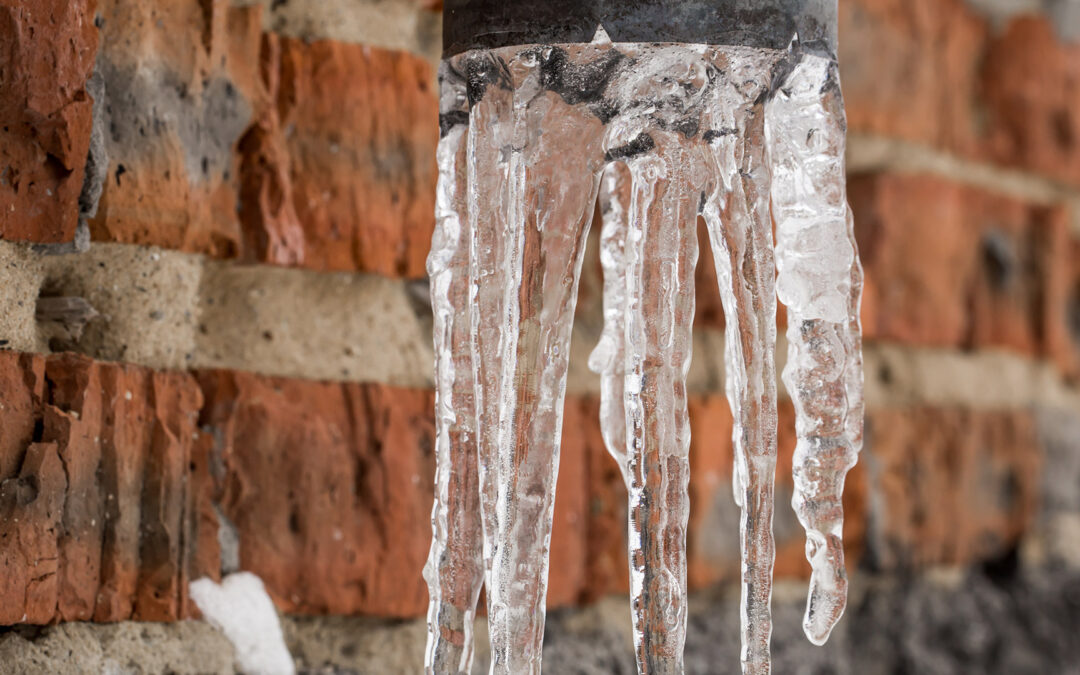Prevent Frozen Pipes
Frozen pipes can cause significant damage to your home or business, leading to costly repairs, burst pipes, and water leaks. This disruption can severely affect your plumbing system and result in expensive water damage. As water freezes, it expands. If trapped inside your pipes, it can cause cracked pipes, broken joints, and blockages.
Key Places to Look
Attics and Basements
These areas of your home often have less insulation compared to living spaces, making the pipes in attics and basements more susceptible to freezing. Insulating pipes in these areas is crucial to preventing freeze-related damage.
Exterior Walls
Exterior walls face the outside and bear the brunt of cold weather. Pipes that run through these areas can freeze over, causing water damage to the insulation, walls, and even the foundation.
Garages
Garages tend to be unheated and uninsulated. If you have a sink or toilet in the garage, those pipes can be damaged by frozen water. Even pipes that simply run through the garage walls can freeze over if it gets cold enough.
Crawl Spaces
Like garages and attics, crawl spaces tend to be less insulated and heated.
Sinks and Cabinets
Pipes running under kitchen and bathroom sinks are often located near exterior walls, exposing them to colder temperatures. Be sure to open cabinet doors to allow warm air to circulate around the pipes.
Outside Plumbing
Outside spigots or faucets are at the highest risk of freezing if not properly insulated. If the faucet isn’t turned off completely, the water inside can freeze and cause the pipes to burst.
Identifying these high-risk areas is the first step in protecting your home or business.
Signs of Freezing Pipes
These are some of the key warning signs to watch for during the colder months.
Low or No Water Pressure
Ice build-up can reduce water pressure in cold water lines. You may also notice a drop in pressure in only one area of your home or business.
Bad Smells
Blockages caused by frozen water can lead to stagnant water, allowing bacteria to grow and produce unpleasant odors. Sewage may also back up into other pipes if a sewage line is blocked.
Strange Noises
Bangs, clangs, or gurgling sounds could indicate trapped air due to a blockage.
Frost or Condensation
This is common on outdoor pipes where frozen water prevents warmer water from flowing. Check these pipes frequently in winter.
Bulges in Pipes
Frozen water can expand and cause bulges, which may burst suddenly, leading to flooding and significant damage.
Unusually Cold Water
If the cold tap is delivering much colder water than usual, it could be a sign that the pipes are starting to freeze.
How to Prevent Frozen Pipes
Heat Tape
Heat tape is an electrical product designed to prevent freezing by warming pipes. Constant wattage tape stays on continuously, while self-regulating tape only activates when needed. Always follow the manufacturer’s instructions, and never overlap heat tape on itself as this can cause overheating or electrical issues.
Let Faucets Drip
Running water won’t freeze, so let faucets drip slightly during especially cold nights. This helps prevent standing water in pipes from freezing.
Seal Gaps and Cracks
Identify areas where cold air enters your home or business and seal these with caulk or spray foam. Doing so not only helps prevent frozen pipes but also improves energy efficiency by reducing heating costs.
How to Unfreeze Your Pipes
If you suspect a pipe has frozen, it’s important to act quickly:
1
Turn on All Faucets
Open both hot and cold faucets to allow water to flow and relieve pressure. This will also help you locate the frozen pipe.
2
Turn off the Water
Once you identify the frozen section, shut off the main water valve to prevent pressure build-up.
3
Apply Heat
Use a heat gun, hair dryer, or space heater to warm the frozen pipe. Towels soaked in warm water also work, but avoid open flames, such as candles or blow torches, as they can be dangerous.
– If the pipe remains frozen despite your efforts, it’s best to call a professional plumber. –
What to Do If Your Pipes Burst?
In the unfortunate event of a burst pipe:

1. Shut off the Main Water Valve
This is crucial to prevent further water damage. Turn off electrical appliances at the breaker box to ensure safety.
2. Drain the System
Open all faucets and flush toilets to remove as much water from the plumbing as possible.
3. Contain the Water
Use towels or a wet/dry vacuum to soak up as much water as possible.
4. Document the Damage
Take photos and detailed notes for your potential insurance claim.
5. Call a Licensed Plumber
A plumber will assess the damage and determine the necessary repairs. If there’s extensive water damage, a water damage restoration service may also be needed.
6. Start Drying
Use fans, dehumidifiers, and open windows to dry the area quickly and prevent mold or mildew. If the damage is severe, you may need to remove carpets or drywall.







